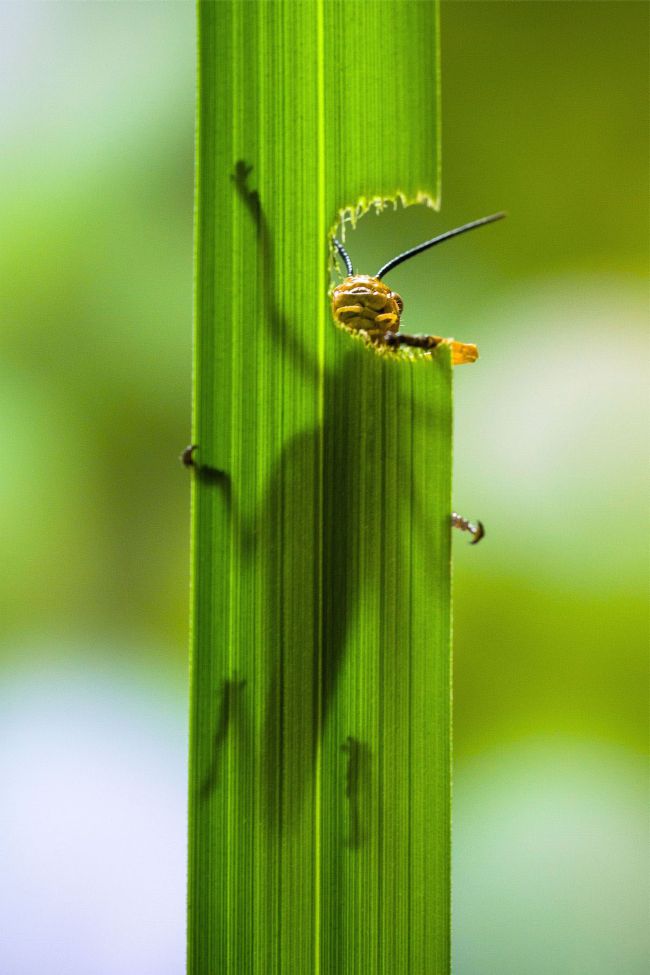|
|
Grasshopper Eating A Plant
|
The digestive system of insects includes a foregut (stomodaeum, the mouth region), a midgut (mesenteron), and a hindgut (proctodaeum, the anal region). The mouth is distinct due to the presence of a mandible and salivary glands. The mandible can chew food very slightly and start mechanical digestion. Salivary glands (occur in buccal cavity) chemically digest the carbohydrates in the grasses and similar foods they eat. The buccal cavity continues with pharynx, esophagus and crop. The crop has the ability to hold food. From the crop, food enters the gizzard, which has tooth-like features in it. From there, food enters the stomach. In the stomach, digestive enzymes mix with the food to break it down. These enzymes originate from the gastric caeca surrounding the stomach. This leads to the malpighian tubules. These are the chief excretion organs. The hindgut includes intestine parts (including the ileum and rectum), and exits through the anus. Most food is handled in the midgut, but some food residue as well as waste products from the malpighian tubules are managed in the hindgut. These waste products consist mainly of uric acid, urea and amino acids, and are normally converted into dry pellets before being disposed.
The salivary glands and midgut secrete digestive enzymes. The midgut secretes protease, lipase, amylase, and invertase, among other enzymes. The particular ones secreted vary with the different diets of grasshoppers.
• Nervous system
The grasshopper's nervous system is controlled by ganglia, loose groups of nerve cells which are found in most species more advanced than cnidarians. In grasshoppers, there are ganglia in each segment as well as a larger set in the head, which are considered the brain. There is also a neuropile in the centre, through which all ganglia channel signals. The sense organs (sensory neurons) are found near the exterior of the body and consist of tiny hairs (sensilla), which consist of one sense cell and one nerve fibre, which are each specially calibrated to respond to a certain stimulus. While the sensilla are found all over the body, they are most dense on the antennae, palps (part of the mouth), and cerci (near the posterior). Grasshoppers also have tympanal organs for sound reception. Both these and the sensilla are linked to the brain via the neuropile.
|
|









